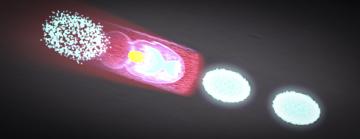Shrinking particle accelerators with cold plasma and a large picnic basket
What could smaller particle accelerators look like in the future? SLAC scientists are working on innovations that could give more researchers access to accelerator science.
By David Krause
Twenty-five feet below ground, SLAC National Accelerator Laboratory scientist Spencer Gessner opens a large metal picnic basket. This is not your typical picnic basket filled with cheese, bread and fruit – it contains screws, bolts, steel tubing, and many other parts and pieces that carry particles to nearly the speed of light. The components are arranged precisely to do an important job: help feed bunches of fast-moving electrons into plasma, the stuff that the sun is made of.
“We’re trying to build the next generation of small, powerful particle accelerators down here,” Gessner said. “The goal is to push particles to higher energies in shorter distances. This could help design compact accelerators that fit inside of a university lab or hospital – or be an option for a high-energy particle collider in the future.”
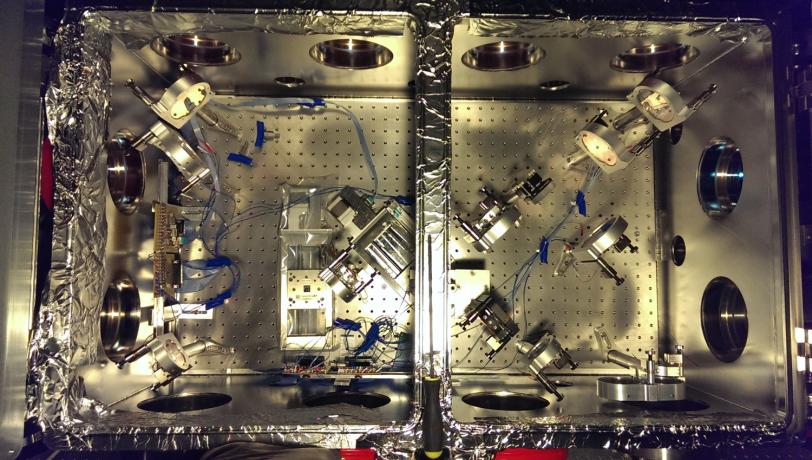
Gessner and many other researchers at SLAC and around the world want to make future accelerators 100 to 1,000 times smaller than traditional accelerators. The goal isn’t necessarily to replace the most powerful accelerator facilities in the world but rather provide a new option for people and places that are looking for access to accelerator science and potentially enhance existing state-of-the-art accelerators. For example, smaller, less powerful X-ray free-electron lasers (XFELs) could be an advanced scientific tool for exploring matter at atomic scales in the hands of many more scientists.
Gessner works at SLAC’s Facility for Advanced Accelerator Experimental Tests II (FACET-II), which is primarily focused on a technique called plasma wakefield acceleration. In plasma wakefield acceleration, researchers send beams of particles through plasma – an extremely hot ionized gas that is often made of helium or hydrogen ions, like the sun.
“When the beam goes through the plasma, a wake is created – similar to the wake that is created behind a boat that is speeding through water on a lake,” Gessner said. “We can then inject electrons into the plasma wake and these particles ride on the wave, reaching higher energies over shorter distances.”
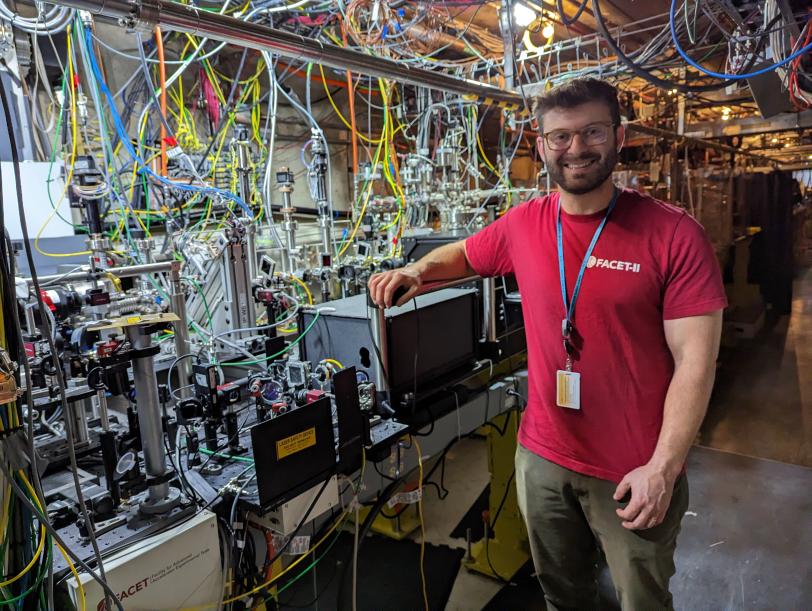
FACET-II uses part of SLAC’s linear accelerator to generate these electron beams. At their peak, the beams are so intense that no material can withstand them. The extreme fields of the beam would rip electrons off of atoms and instantly vaporize any material in a beam’s path. The solution is to start with a plasma in the first place, which removes the limitations of conventional materials and allows very high acceleration.
But pushing particles to extremely high energies in shorter distances brings many challenging problems. Researchers continue to make strides toward solving these problems and turning what might sound like science fiction into a reality.
Plasma acceleration research past and future
Plasma wakefield acceleration experimental work started at SLAC about twenty years ago, although the general concept had been talked about in papers since the late 1970s and early 1980s. There are three main types of plasma wakefield research going on around the world, grouped by the power source that creates the wake: either an electron beam, a high power laser beam or a proton beam.
One of the first questions researchers had to answer was whether it was even possible to make the theoretical idea of plasma wakefields a reality in the lab, FACET-II director Mark Hogan said. Researchers were able to accomplish this task at SLAC in the late 1990s and were the first to break the GeV barrier, which is the energy level typically only associated with very large scale installations. They took a handful electrons and accelerated them very high energies using plasma wakefields.
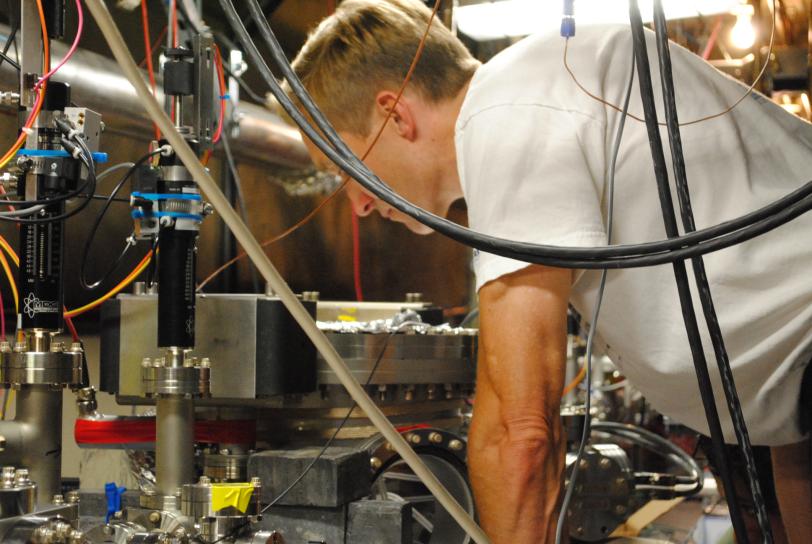
Hogan said that researchers then confronted the next big question: how to go from a handful of particles with a wide range in energy to a beam of particles with a relatively low energy spread. This means ensuring that electrons are not scattered around everywhere in an accelerator, but instead travel together in a tight pack. Researchers accomplished this task in the 2010s at FACET, the facility preceding FACET-II, Hogan said.
“So now the question for FACET-II is can you do all of these things at once – harness the large fields to make the high energy beams with low energy spread – and also make a high-quality beam over longer distances,” Hogan said. “This is a key question we’re investigating right now at FACET-II: Can we preserve the quality of electron beams as we boost their energy up very rapidly over meaningful distances?”
Looking even further ahead, scientists will need to figure out how to string many plasma accelerator sections together to achieve incredibly high energies needed for the future collider particle physics. "Whereas to build an XFEL that relies on plasma wakefield acceleration, you might only need one plasma stage, to reach particle collider-level energy, you need many stages," Hogan said.
Controlling beam brightness
Earlier this year, a team from SLAC, the University of Strathclyde and other institutions made a large stride forward in plasma wakefield acceleration research. They developed a computer simulation that showed how a plasma accelerator can generate precise, high-quality electron beams by controlling a beam’s brightness.
Managing beam brightness is challenging because there are three key parameter values that change substantially over the path that particles travel on. The team’s model showed how to optimize these parameters right from the start of the experiment, when the beam is still in the plasma.
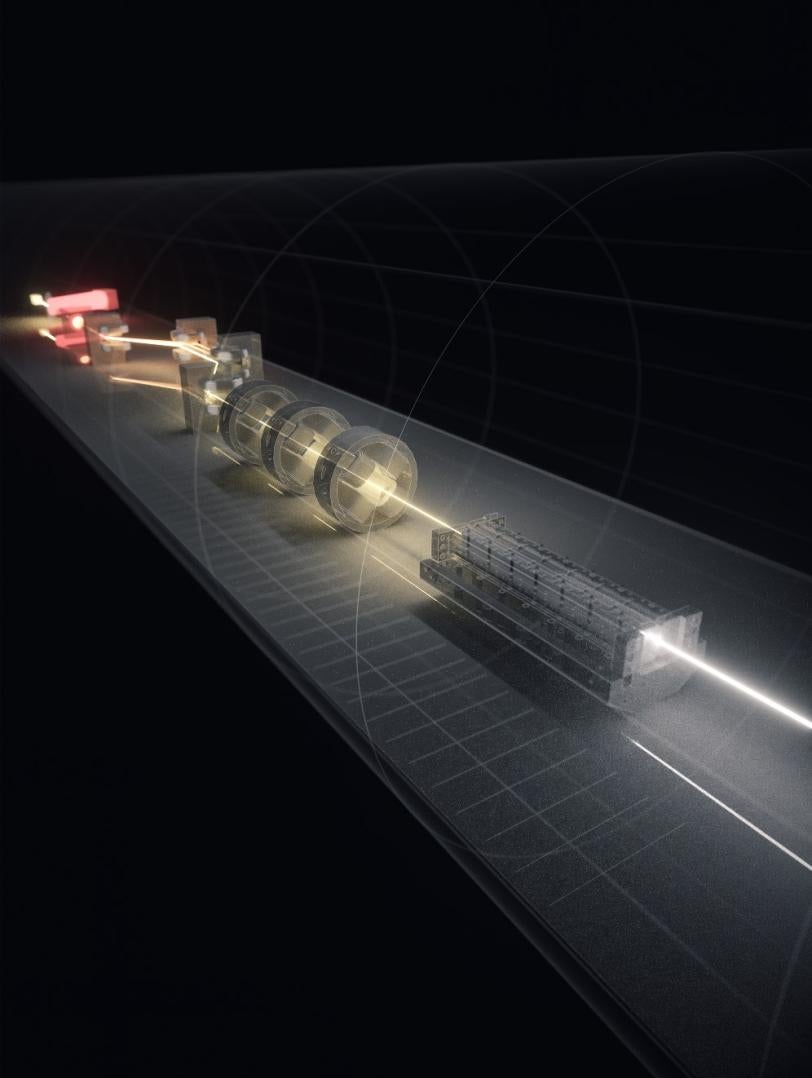
Specifically, the research team calculated how to manage electron brightness by controlling beam current, which describes how many electrons make up the beam; emittance, which is how the electrons spread out as they propagate through space; and energy spread, which describes the range of the velocities of the electrons. They published their results in Nature Communications.
“With this model, we can test how to improve electron beam emittance and brightness in our compact design, perhaps by orders of magnitude,” said Hogan, a co-author on the paper. “Extracting electron beams from plasma accelerators while preserving their quality is crucial for our high energy physics mission as well as for X-ray science.”
In the future, researchers will try to build hybrid configurations of a compact XFEL – a version that could allow for interaction between multiple X-ray laser pulses and ultrabright beams. FACET-II could be the place to test these hybrid ideas, now that the start-to-end simulation framework is established, the researchers said.
Setting a long stage
Another step forward in plasma wakefield acceleration research came recently when researchers showed how to string together plasma accelerator stages to make a longer, more powerful accelerator. This type of accelerator could be used in the future to create extremely high-energy beams at a particle collider.
The research team, which included SLAC scientist Alexander Knetsch and researchers from The Polytechnic Institute of Paris and other intuitions, showed how to use multiple drive beams to maintain beam quality and increase energy.
In their method, a drive beam leads the way through the plasma, creating a wake – the standard idea in plasma wakefield acceleration. Behind this drive beam follows the primary electron beam, called the trailing beam, which will be pushed to high energies for experiments – again, the standard approach. But over time, the drive beam loses energy – like a lead bicyclist losing energy after fighting the wind for the riders behind. The research team, therefore, showed how to sub out the old, tired drive beam with a new, fresh drive beam. This technique helps the trailing electron beam continue to gain energy.
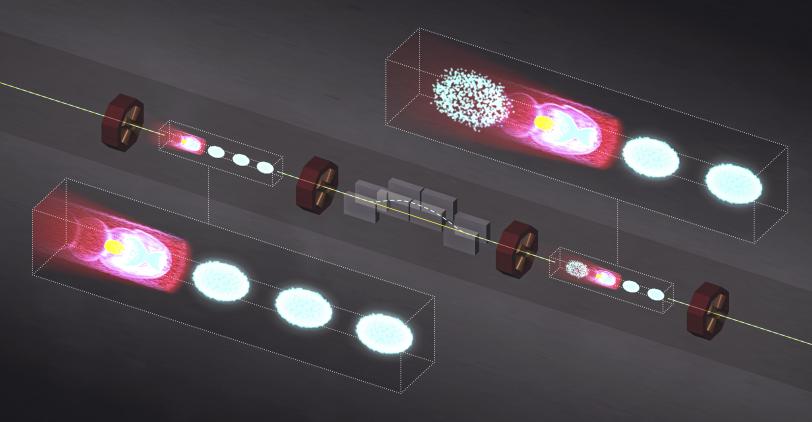
However, swapping out the old drive beam for a new one is more difficult than swapping out a lead cyclist in a bicycle race. The old drive beam is still moving at nearly the speed of light, so to make the switch, the method uses dipole magnets that form a chicane – i.e., two roads, one longer than the other, that meet after separating. Chicanes allow the drive beam to move out of the way while the trailing beam continues on with a new drive beam.
Additionally, researchers showed how to transport that beam pack through each plasma stage using focusing lenses that help the trailing beam stay on path while the drive beam swaps take place. The researchers published a paper describing the idea in September in Physical Review Letters.
Another compact accelerator idea
Along with plasma wakefield acceleration, researchers have other ideas for ways to accelerate particles in shorter distances. One of these ideas will be built at Arizona State University (ASU) with SLAC’s Emilio Nanni and others collaborating. The design uses lasers – rather than only magnets – to wiggle electrons inside of an XFEL to produce powerful X-rays needed for experiments.
In traditional XFELs, strong magnets wiggle a particle beam to generate X-rays. The line of magnets can be long, meaning the overall XFEL length will be long. But what if an XFEL did not need a full line of magnets to make particles dance and emit X-ray radiation? This is the question that helped lead to the design of the compact XFEL, which uses a laser beam to strike the particle beam, helping the beam wiggle and produce powerful X-rays. The lasers mean that fewer wiggler magnets may be needed, resulting in a shorter XFEL overall if the idea works out in practice.
The compact XFEL will be built within the next five years at the ASU Tempe campus. Building small, more compact accelerators is a good thing for science, researchers said. Doing so means that more people and places can access particle accelerators, which have been one of the most important tools over the past 100 years in science.
The end of the line
Back inside the accelerator tunnel, Spencer Gessner closes the lid of the picnic basket and walks toward a long table. Here, fellow SLAC scientist Doug Storey stands and works on a laptop, reviewing beam performance data. The table is called the beam dump table, and it’s the primary post-plasma diagnostic area for measuring what has happened to the electron beam after plasma wakefield acceleration, Storey said.
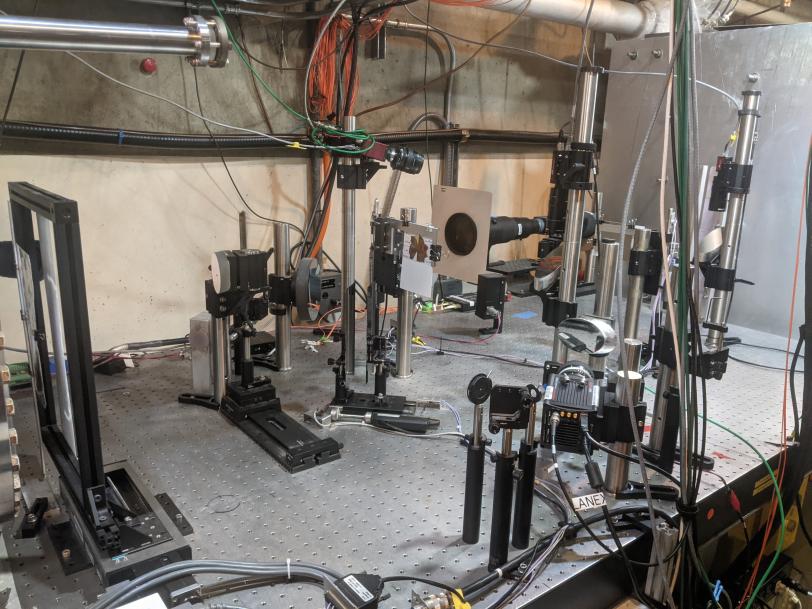
Cameras on the table collect data about the accelerated beam's energy to within a tiny fraction of a percent and the beam’s spot size to less than a few micrometers, which are key indicators of the beam brightness, Storey said. Additionally, some of the cameras view the X-ray and gamma-rays that are produced when the beam travels through plasma. This information helps scientists understand how to improve the quality of the plasma acceleration, Storey said.
Storey looks back at his laptop and starts working again. Gessner walks past him, back toward the beginning of the facility. He passes by the metal picnic basket and continues out from the underground tunnel, where the next generation of smaller, powerful accelerators are baking.
Contact
For questions or comments, contact the SLAC Office of Communications at communications@slac.stanford.edu.
About SLAC
SLAC National Accelerator Laboratory explores how the universe works at the biggest, smallest and fastest scales and invents powerful tools used by researchers around the globe. As world leaders in ultrafast science and bold explorers of the physics of the universe, we forge new ground in understanding our origins and building a healthier and more sustainable future. Our discovery and innovation help develop new materials and chemical processes and open unprecedented views of the cosmos and life’s most delicate machinery. Building on more than 60 years of visionary research, we help shape the future by advancing areas such as quantum technology, scientific computing and the development of next-generation accelerators.
SLAC is operated by Stanford University for the U.S. Department of Energy’s Office of Science. The Office of Science is the single largest supporter of basic research in the physical sciences in the United States and is working to address some of the most pressing challenges of our time.
